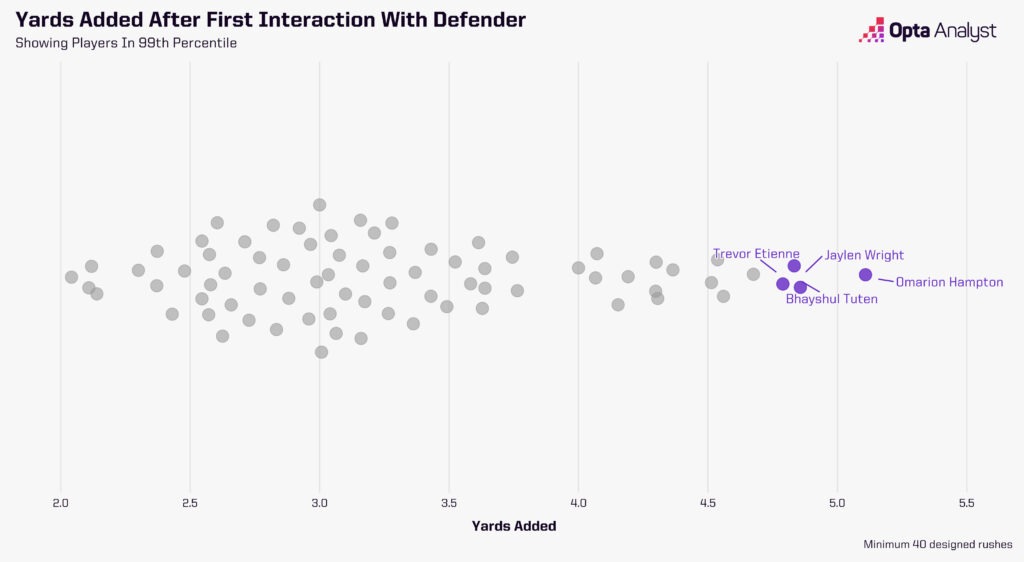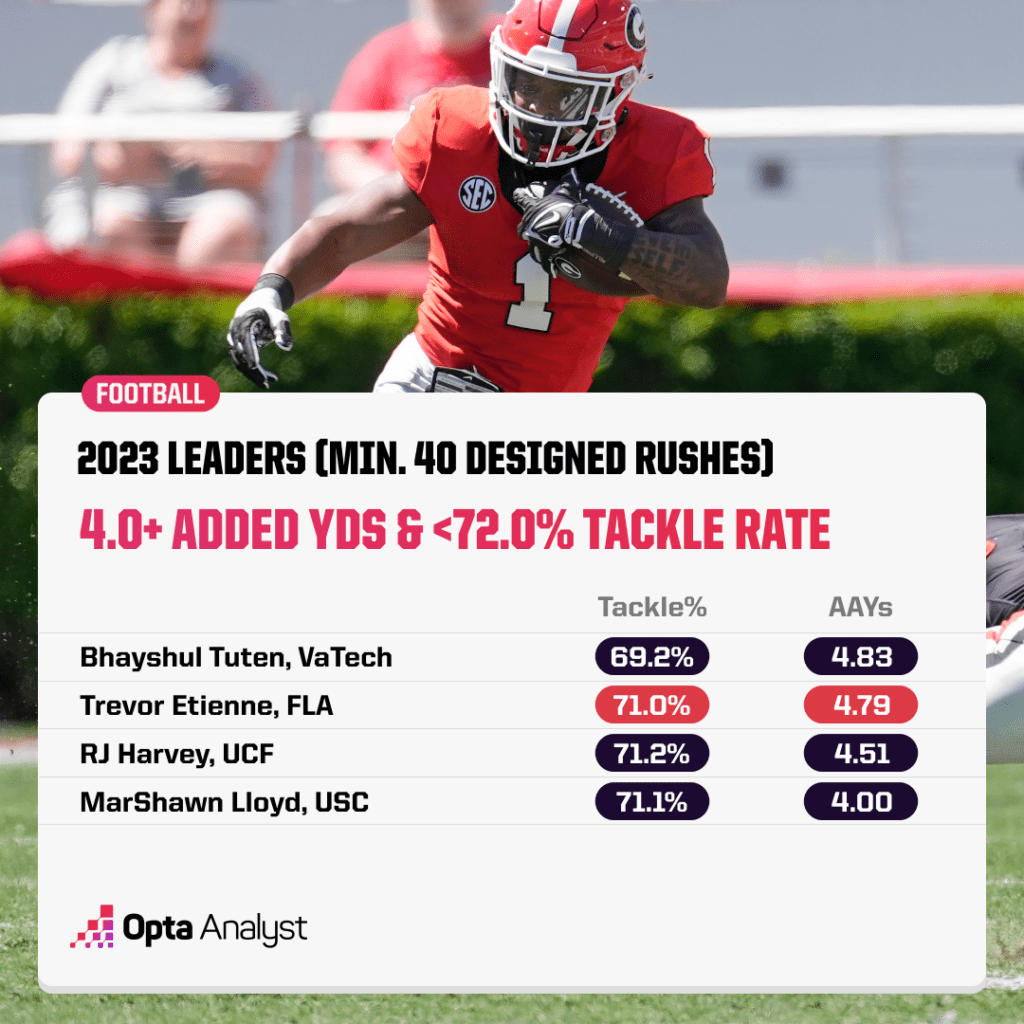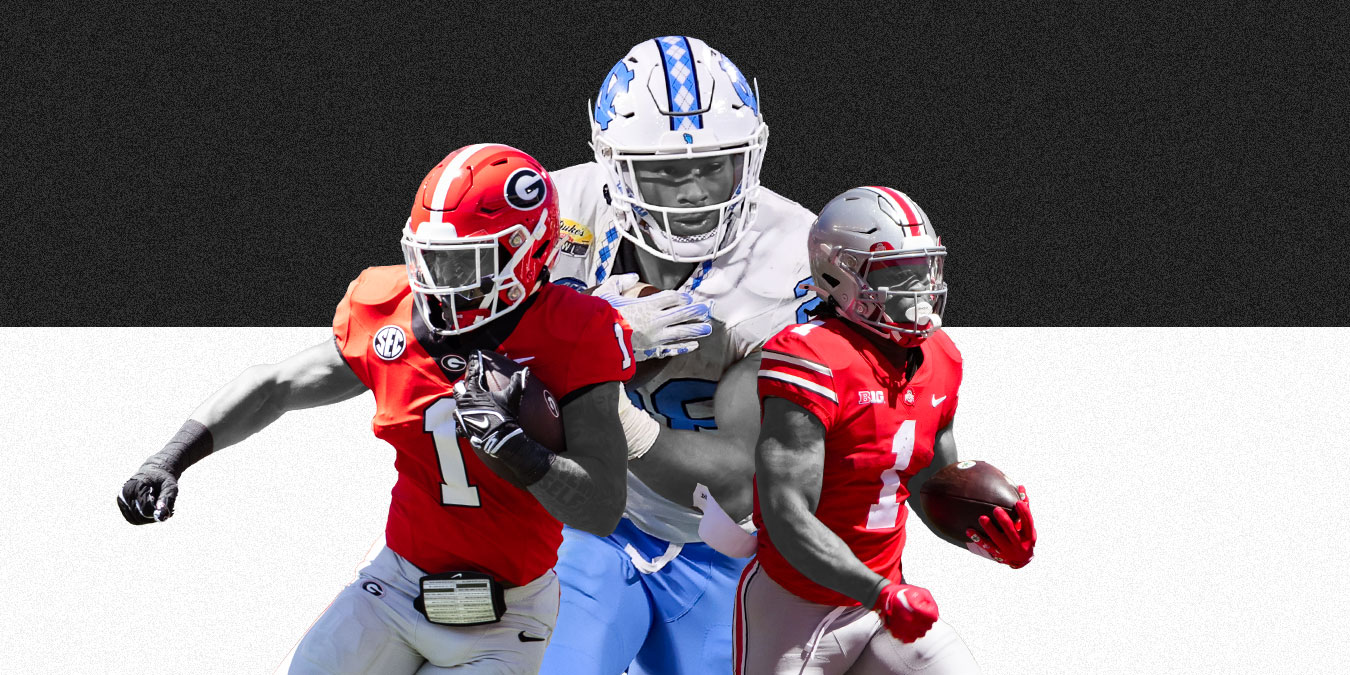The NFL may have fallen out of love with running backs, but college football never will.
At a level of play that doesn’t overflow with elite quarterback play, the tailback remains the defining player in a bunch of collegiate offenses – not the least of which was last year’s national champion, Michigan, led by running back Blake Corum and the bruising linemen who punched holes for him.
Corum, along with a few other college stars from last year, now plays in the NFL. Meanwhile, a long list of the country’s best quarterbacks joined him, as did an all-time wide receiver class led by Marvin Harrison Jr., Malik Nabers and Rome Odunze.
But while those skill positions are in need of a college backfilling, the situation at running back is much different. The college ranks welcome back a big handful of outstanding ball carriers in 2024, and they’re poised to shape the race to the first 12-team College Football Playoff.
Here are four tailbacks who are especially worth keeping an eye on. And play-charting data will help us examine their talents with more depth than traditional stats allow.
Omarion Hampton, North Carolina
Everyone knows Hampton is good. He was effective as a true freshman in 2022, when he was a second-stringer behind veteran Elijah Green and averaged 4.6 yards on just 88 carries. In 2023, with Green fighting injury problems, Hampton took off and became arguably UNC’s best offensive player. He averaged 5.9 yards per carry, scored 16 touchdowns from scrimmage, and at one point had six consecutive 100-yard rushing games.
Hampton was a model of consistency. The less said about how UNC managed to lose its typical five games with Hampton, Drake Maye and wideout Tez Walker on the same offense, the better. (Relatedly, the Tar Heels now have a new defensive coordinator.)
What our numbers suggest is that Hampton was even better than you likely thought. On 138 tracked touches, Hampton was one of the hardest men in college football to bring down. The success rate of would-be tacklers against him was a meager 74.2%, meaning that on one in four of his encounters with a defender, Hampton caused a broken tackle or a missed tackle altogether. From Hampton’s first brush with a defender, he averaged an additional 5.11 yards – the best mark in the country of anyone with more than 40 designed rushes.

Hampton is an offensive lightning bolt. And with Maye and Walker now in the NFL, he’s set to be the focal point of an evolving Carolina offense in 2024.
Quinshon Judkins, Ohio State
Judkins was one of the offseason’s most high-profile transfer pickups when the Buckeyes landed him away from Ole Miss. On the whole, Judkins was a lot less productive as a true sophomore in Oxford than he was during a breakout freshman season in 2022.
Judkins’ yards per carry dipped from 5.7 to 4.3, his yards per reception went from 8.8 to 6.6., and he lacked the big-play dimension he flashed as a rookie. (In 2022, his 19 runs of 20-plus yards were third in the FBS.) But Judkins wasn’t even the top 100 in that stat as a sophomore, and Ole Miss relied much more on QB Jaxson Dart.
Yet there is a reason that Ohio State, already flush with running backs including the Heisman Trophy candidate TreVeyon Henderson, wanted Judkins. He’s still a value-adding ball carrier. On 92 designed rushes last year, Judkins forced a missed tackle on a sparkling 29.8% of his chances – one of the highest marks of any tracked player.
From his first tackler encounter, Judkins added 3.27 additional yards per carry. And it’s very easy to make the case that Judkins’ decline in production had a lot to do with an Ole Miss offensive line that didn’t get a lot of push. He averaged just 1.42 yards before reaching a tackler – one of the lowest marks for any regular running back.
Ohio State’s line is the Buckeyes’ biggest question mark, but Judkins should be in line for a nice season alongside Henderson.
Trevor Etienne, Georgia
Speaking of big-time transfers: Etienne dealt a major blow to Billy Napier’s Florida rebuild effort when he ditched the Gators for SEC East rival Georgia.
Etienne was in a timeshare in the Florida backfield with Montrell Johnson, and while Napier hung onto Johnson for 2024, he couldn’t do the same with Etienne. The two backs had similar statistical profiles, each averaging around 5.5 yards per carry with similar explosivity metrics. (Both had exactly 24 runs of 10+ yards, though Johnson carried 21 more times and appeared in one more game.)
Under the hood, though, Etienne was the best running back in Gainesville in 2023. He allowed the fourth-lowest tackle success rate at 71.0% on his 76 designed rushes, while Johnson allowed an 82.3% tackle rate on 65 tracked runs. Etienne averaged 4.79 yards after his first touch – fourth among RBs with at least 40 designed rushes – to Johnson’s 3.37.

And one wonders if now that he’s in a dominant Georgia offense with an elite offensive line, Etienne might now put up the kind of season that his older brother Travis routinely did at Clemson. (If you’re looking for an off-the-radar Heisman future pick, Etienne makes a lot of sense to me, although UGA quarterback Carson Beck is getting considerably more preseason attention.)
Darius Taylor, Minnesota
Taylor is an enticing breakout candidate. As a true freshman for PJ Fleck last year, he tore it up in an offense that had very little going for it aside from him. An injury cost him the last five games of the regular season, but Taylor carried 138 times in total for 799 yards (a 5.8-yard average) and threw in 11 catches for 92 yards on the side.
He did damage against pretty much everyone: In his six starts, he went over 137 yards five times, averaging at least 5.9 in each. The lone exception was an upset win at Iowa in which Taylor carried 16 times for a 3.7-yard average – not glamorous, but way above average against a stifling Hawkeye defense that gave up very little on the ground.
Now Taylor gets a crack as a sophomore. And our data might like Taylor even more than conventional stats. On his 29 designed runs, he allowed a measly 63.0% tackle success rate and gained an average of 6.55 yards after his first encounter with an attempted tackler. He did that despite only getting 0.28 yards downfield before that first encounter, suggesting that Minnesota didn’t open big lanes for him but Taylor thrived anyway.
All told, Taylor added 6.87 yards per carry beyond what would normally be expected given where tacklers met him. That was the best mark in FBS for any player with 20 designed rushes or more.
Stats Perform’s Kyle Cunningham-Rhoads contributed. Check out our MLB, NBA and NFL coverage. Follow us on X and Instagram for more!
